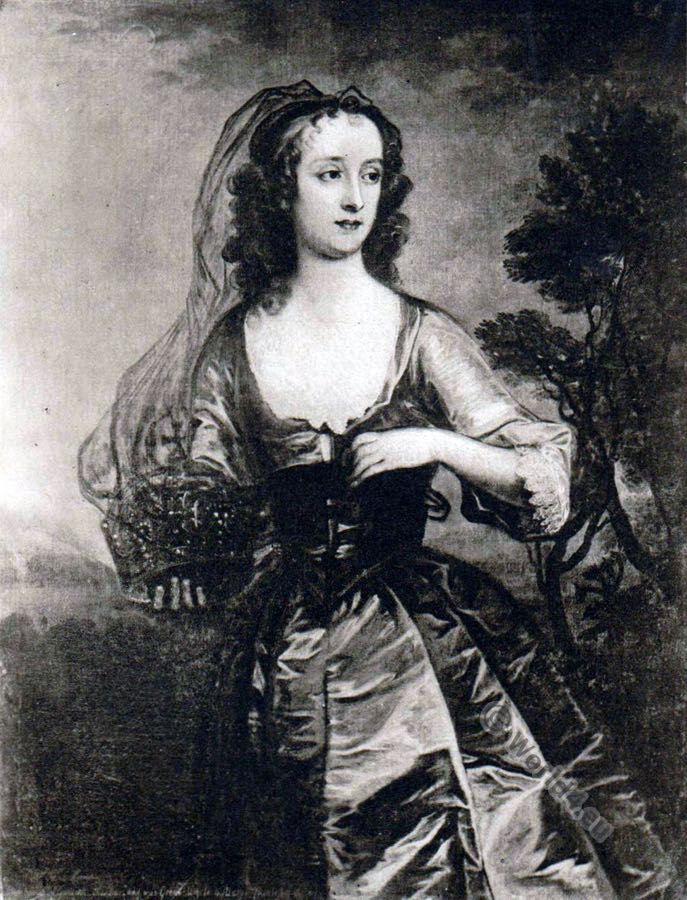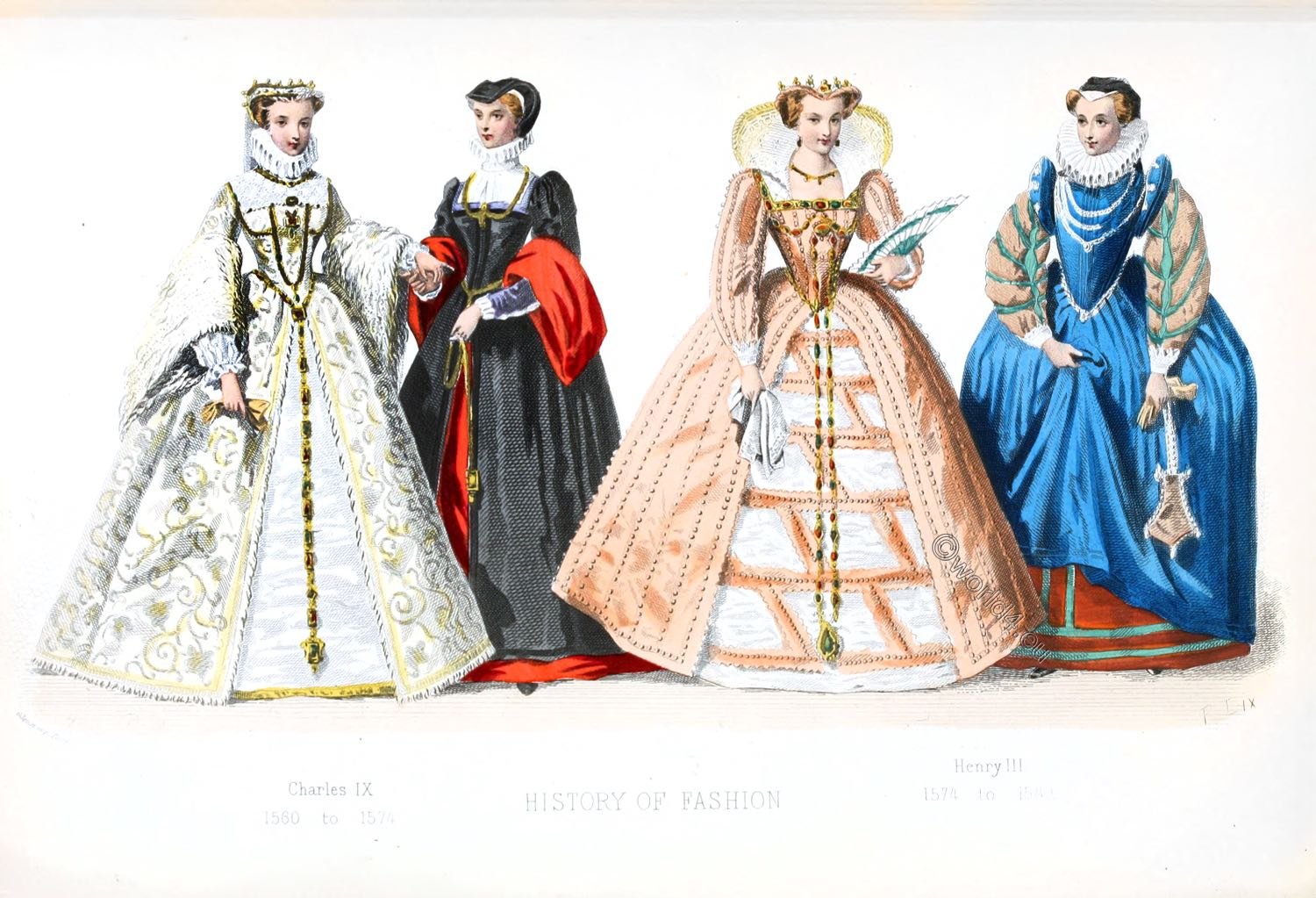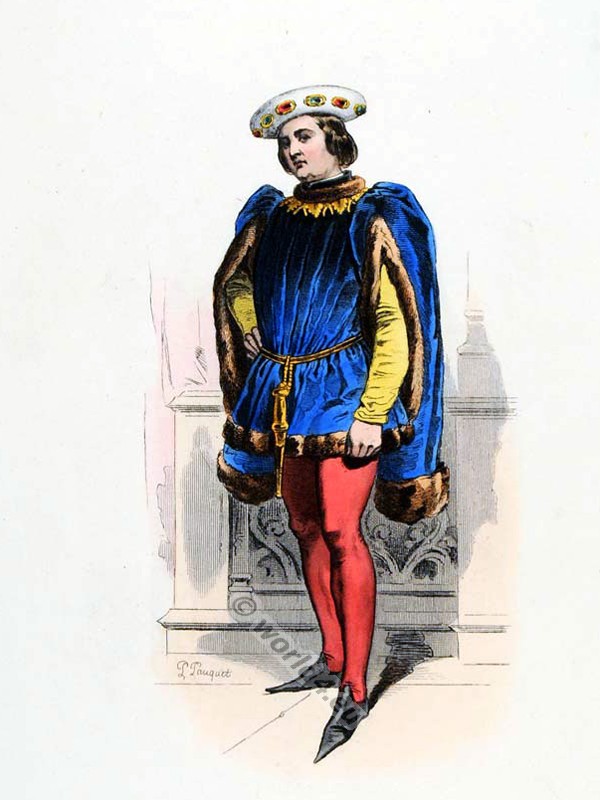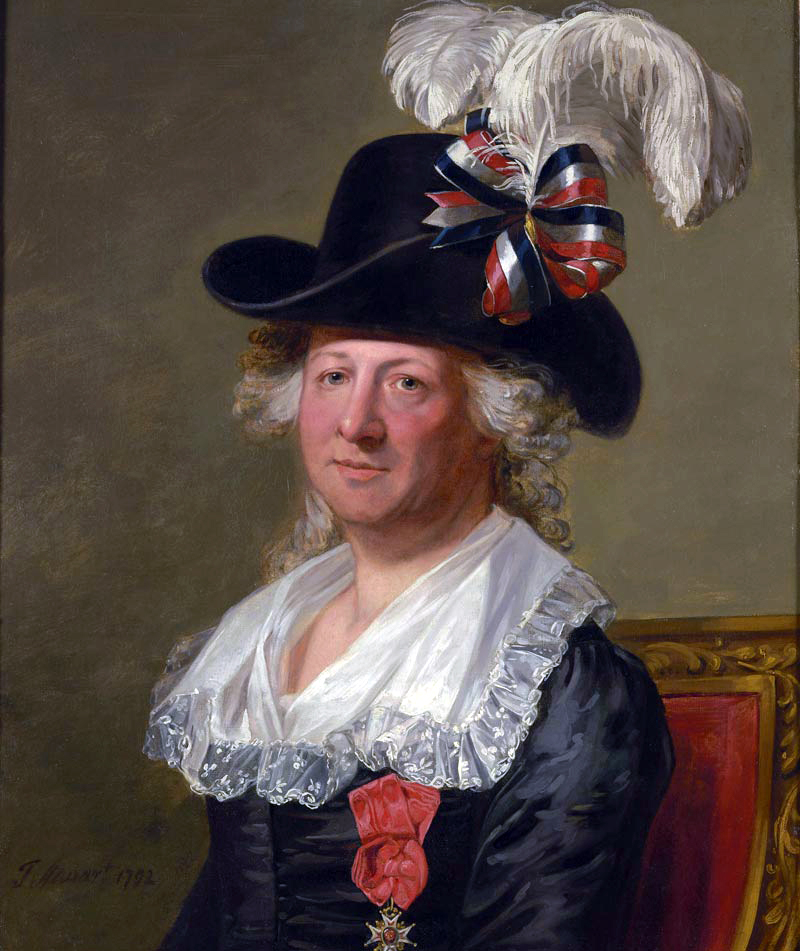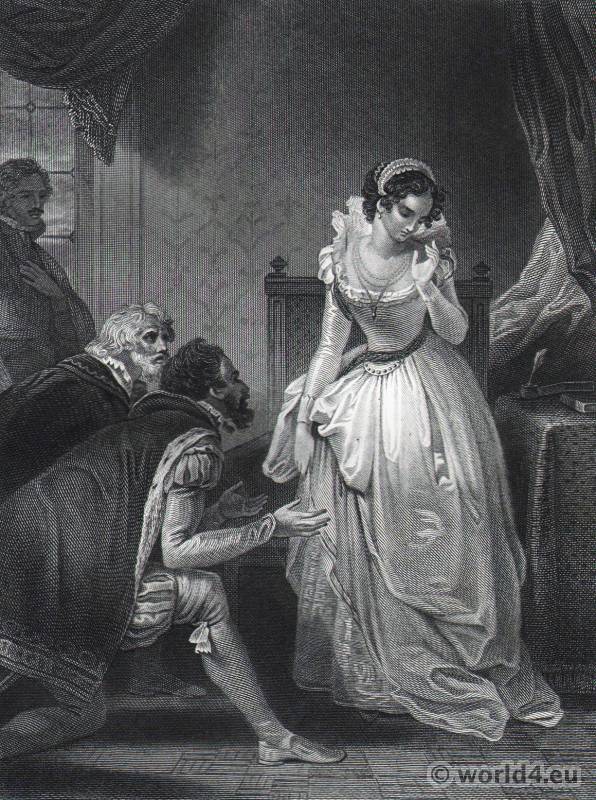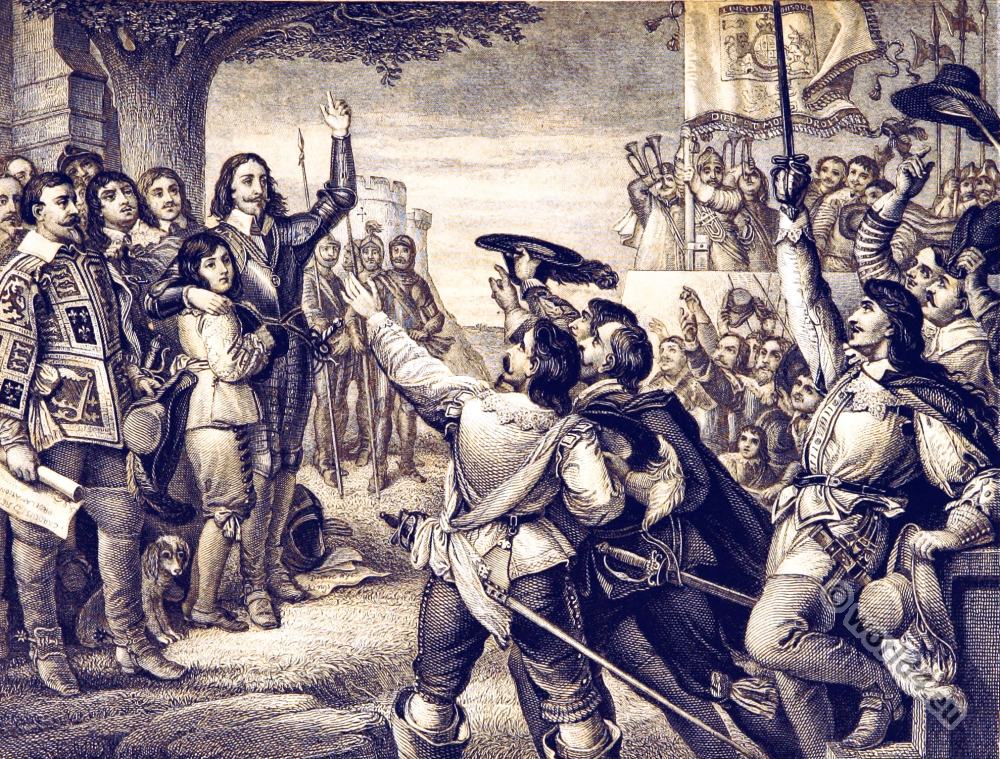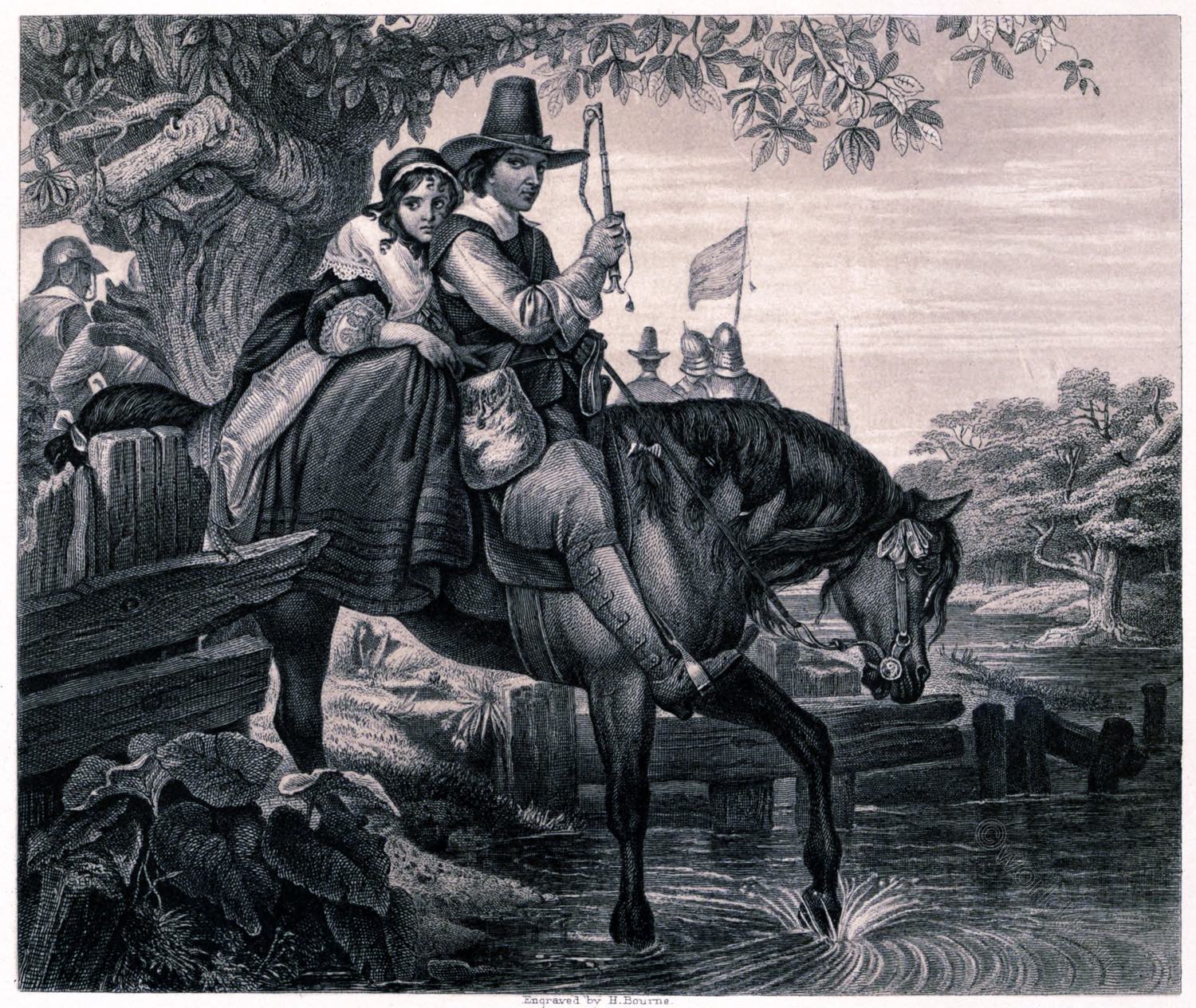
Charles as William Jackson riding with Jane Lane to Bristol. The Escape of Charles II after the battle of Worcester. By Edward Matthew Ward.
The Escape of Charles II.
Charles and Jane Lane who sheltered King Charles II after his defeat at the Battle of Worcester, 1651. Charles as William Jackson.
The total defeat of the Scottish Royalists at Dunbar, in September, 1650, was the beginning of the complete victory which was afterwards gained by Oliver Cromwell.
Charles, who after the battle of Nase by had retired to Scilly and afterwards to Paris, had been proclaimed king in Scotland immediately after his father’s execution, and on the 23d of June, 1650, set out for Edinburgh, where he was again proclaimed on the 15th of July. On the 1st of January, 1651, he was crowned at Scone, but the battle of Dunbar had then been lost by the Scots, and in the following summer Cromwell turned the position of their army at Stirling.
Charles, who does not seem to have been wanting in cool personal bravery, then determined to venture marching into England, in the expectation that his friends would flock to his standard; but the decisive battle of Worcester, Cromwell’s “crowning mercy,” entirely frustrated this desperate attempt, and after the total rout of his adherents Charles escaped with considerable difficulty.
Then began that series of adventures, hair-breadth escapes, d’isguises, and expedients by which he eluded the vigilance of his “Roundhead” pursuers, and the story of which was just the kind of narrative to enlist the sympathies of the people, and to evoke an admiring sentiment allied to that dramatic interest which we still feel in reading the account of the retreat to Boscobel and the hiding of the fugitive in the “Royal” Oak.
After the defeat at Worcester (Sept. 3d, 1651) the king and some of his principal officers fled, intending to pass along the west of England to Scotland; but Charles, who doubted the possibility of so large a party making a retreat with safety, proposed to push on to London before the news of the defeat should reach the capital, and so obtain a passage in some vessel bound to France or Holland.
By the time they had reached Kinver Heath, however, it was night, and the guide who was with them declared that he was unable to find the way. This caused no little dismay, but the Earl of Derby told the king that when he had himself been in a similar strait he found refuge and safe concealment in a place on the borders of Staffordshire called Boscobel, upon which, out of the darkness, came the voice of one Charles Gifford, a Roman Catholic Royalist, saying, “I will undertake to guide his majesty to Boscobel before daybreak.”
Boscobel was in fact Gifford’s own mansion, which he had built not long before and fancifully named it after the Italian Boscobello or Fairwood. The offer was at once accepted, and the king, with only a small party of his friends, set out for the promised hiding-place, a very good one for the purpose, since it was in a remote situation far from the ordinary track of passengers, and belonging to a Catholic gentleman, was sure to have been provided with “hiding-places” for priests, who frequently were compelled to have recourse to these priests’ holes, which were often entered by traps in the floor of some closet, or by sliding panels in the walls.
At the time that Mr. Gifford was at the wars his house was left in charge of a family of peasants named Penderel, who followed the business of wood-cutters, and were simple trustworthy faithful people devoted to their master and the royal cause.
By daybreak Charles had reached a house called White Ladies, so named from a ruined convent close by, and also in the possession of the Giffords. Here he was hospitably entertained, and having put on the dress of a peasant was conducted by Richard Penderel to Boscobel after taking leave of his friends, who departed for the north.
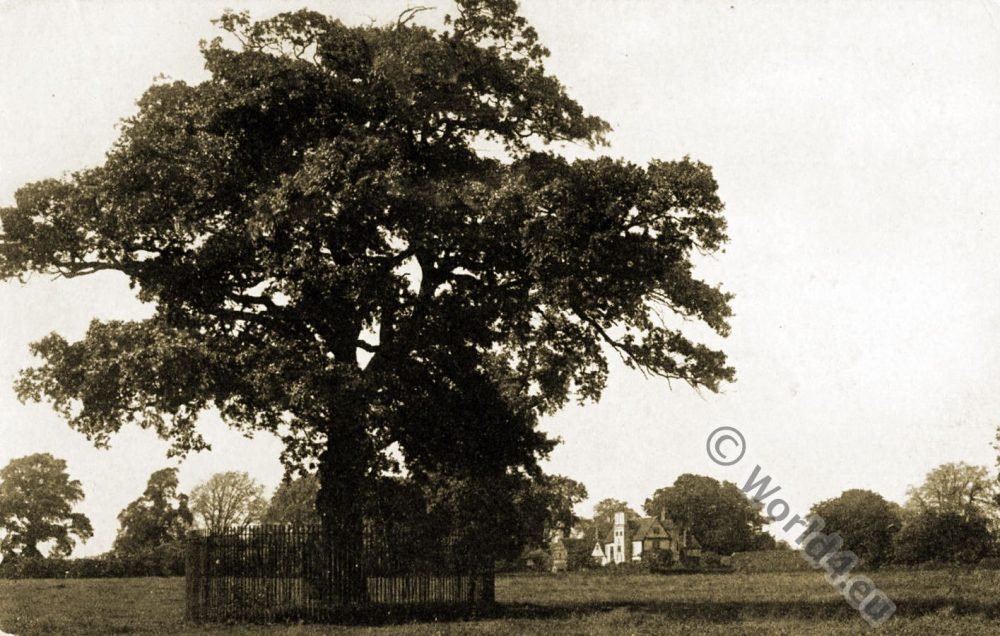
It was while he was in this district that the king made the acquaintance of Father Huddlestone, a priest who assisted him in his efforts to escape, and from whom he took the sacrament when he was on his death-bed, after he had solemnly declared himself to be a member of the Romish Church.
Though in the woodland retreat but few amusements and little society could be found, it was a place of comparative safety—a roomy half-timbered building, with a central turret of brickwork and timber forming the entrance stair. A small portion of the wood was cleared around it for a little inclosed garden, having a few flower-beds in front of the house and an artificial “mount” with a summer house upon it, reached by a flight of steps.
Here Charles sat during the only Sunday he passed at Boscobel. Blount says, “His Majesty spent some part of this Lord’s-day in reading, in a pretty arbor in Boscobel garden, which grew upon a mount,and wherein was a stone table and seats about it, and commended the place for its retiredness.” (Chambers’ Book of Days.)
Charles did not rest very tranquilly at Boscobel. He was anxious to get to London, and soon after he had reached his place of refuge, determined to set out on foot ina country fellow’s habit with a pair of ordinary gray cloth breeches, a leathern doublet, and green jerkin, taking no one with him but trusty Dick Penderel, as one of the brothers was called.
Scarcely had they reached the edge of the wood, however, than they were nearly being discovered by a troop of Roundheads, who were passing in the neighborhood, and from whom they were obliged to hide in the thicket all day during a drenching rain.
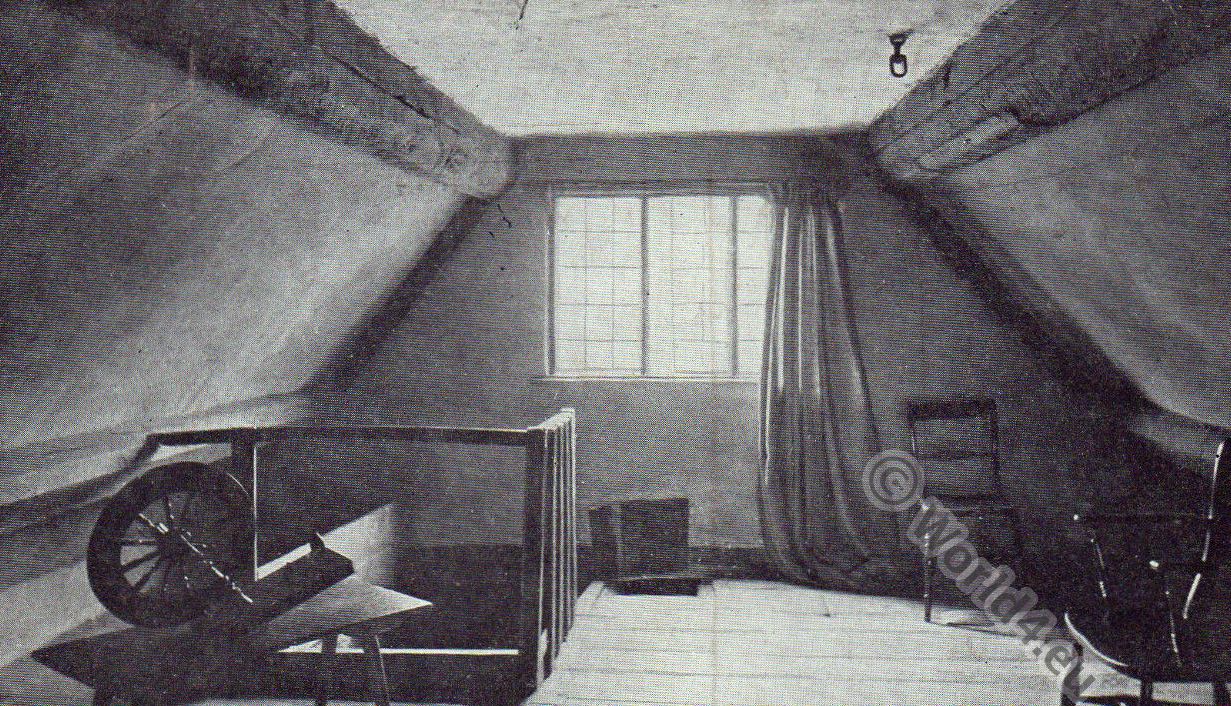
This experience caused the king to alter his plan and to attempt to reach the Severn, and so to embark for France from one of the Welsh seaports.
They started again at midnight on this new journey; but the country was difficult, and Oliver Cromwell’s troops were so alert that the danger was too great to be encountered, and they returned to Boscobel to find Colonel William Careless, who had arrived after escaping from Worcester fight, where he had been one of the last on the field.
It being Sunday the king kept in the house or amused himself by reading in the close arbor in the little garden, and the next clay he took the colonel’s advice to get up into a great oak which was situated in the wood, to which access was gained by a gate at the back of the arbor.
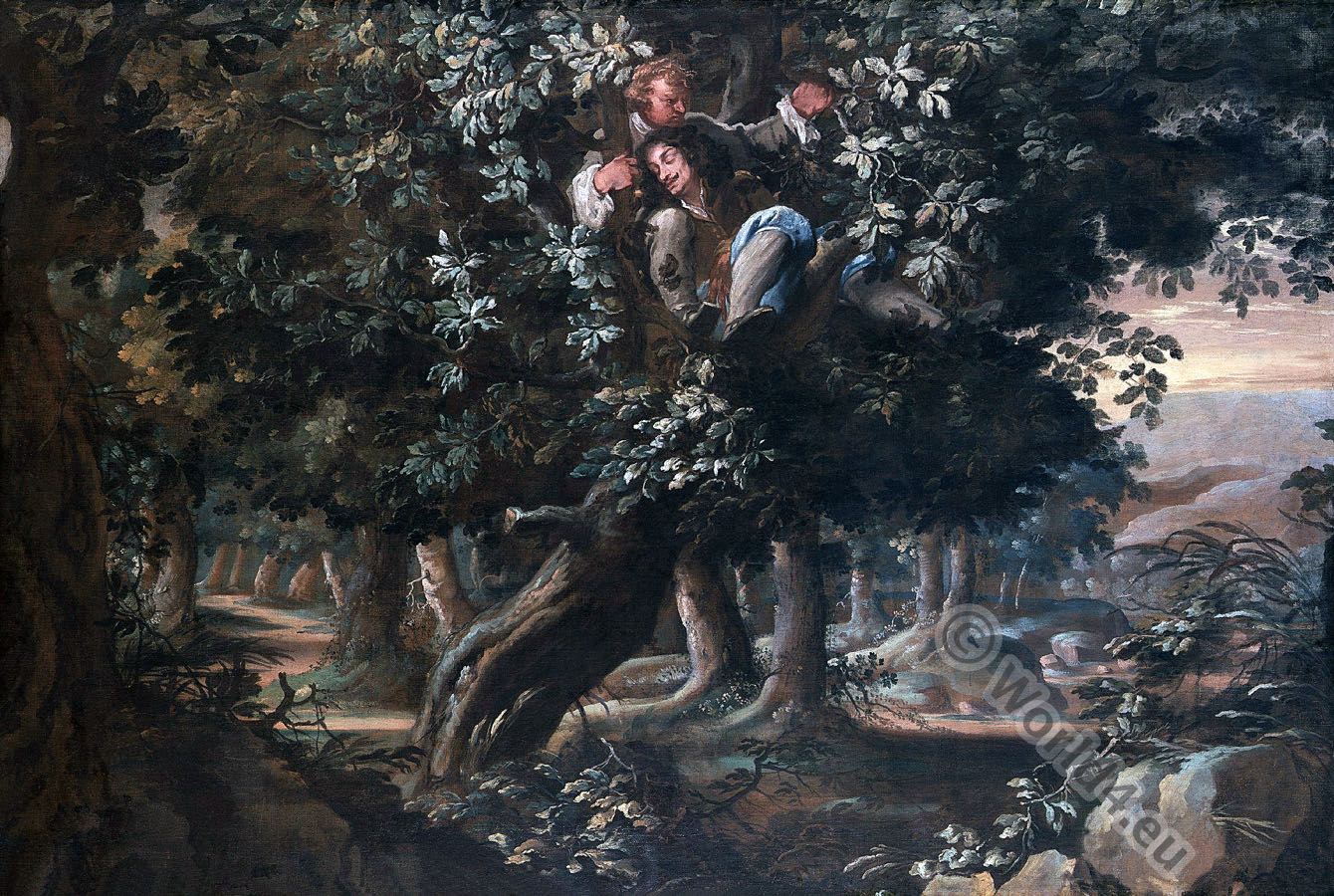
The oak (says Charles) was “in a pretty plain place where we might see round about us. … A great oak that had been lopped some 3 or 4 years before, and being grown out again very bushy and thick could not be seen through.” It was about a bowshot from the house, and there the king and the colonel stayed the whole day, having taken up with them some bread and cheese and small beer, the colonel having a pillow placed on his knees that the king might rest his head on it as he sat among the branches.
The retreat at Boscobel was growing unsafe, for while they sat there in the tree they saw the troopers beating the woods on the lookout for escaped prisoners; and at midnight the king again set out and reached the house of Mr. Whitgrave at Mosely. On the following day he went to Colonel Lane’s house at Bently and thence commenced the journey which has formed the subject of our historical picture.
Disguised as a serving-man, he set out to ride towards Bristol, with Colonel Lane’s sister behind him on a pillion, in the character of a comely country lass. It was an expedition which required no little nerve and coolness, for the Roundheads were all about the country, and more than once there was imminent peril of the homely servitor and his fair charge being arrested.
On one occasion, in order to avoid direct collision with the troops, the king was obliged to put the horse through a brook, and after all attempts he could not get far on the journey. The courage and address of his fair companion saved him from detection; but he was compelled to abandon the route he had chosen, and again to seek a refuge whence he might make another attempt.
At last, after lying hidden as long as his patience would permit, he again essayed to escape, and after many misadventures and much uncertainty contrived to reach Shoreham in Sussex, where he obtained a vessel which carried him across to Fécamp in Normandy October 1651.
Source: “Pictures and Royal Portraits illustrative of English and Scottish History. From the introduction of Christianity to the Present time.” Author: Thomas Archer. Published in London, 1878 by Blackie & Son.

Discover more from World4 Costume Culture History
Subscribe to get the latest posts sent to your email.

